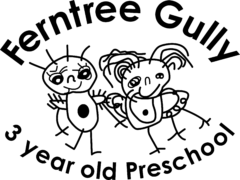Curriculum
We are guided by the Victorian Early Years Learning and Development Framework (VEYLDF). The VEYLDF is a planning framework used to create an individual early learning curriculum to support and enhance young children’s learning from birth to the early years of primary school. The Framework identifies five outcomes for all children from birth to eight years:
● Children have a strong sense of identity (identity)
● Children are connected with and contribute to their world (community)
● Children have a strong sense of wellbeing (wellbeing)
● Children are confident and involved learners (learning)
● Children are effective communicators (communication)
These five learning outcomes are incorporated in our learning and development principles, to assist in designing play based experiences and opportunities that provide support for every child’s learning and development.
At Ferntree Gully 3 Year Old Preschool, a play based learning environment will be implemented, using open ended resources that allow children to connect to nature, encourage inquiry and imaginations. We strive to incorporate the Reggio Emillia approach into our planning by giving children opportunities to explore, question, create, discover and experiment. Children’s curiosity with the natural world and unique way of knowing requires discovery and exploratory learning, rather than an instructive approach. Play will be led by the children, not the clock. Routines will be flexible to encourage deeper thinking and investigation and foster children’s independence.
Reggio Emilia Approach
“The Reggio Emilia Approach is an educational philosophy based on the image of a child with strong potentialities for development and a subject with rights, who learns through the hundred languages belonging to all human beings, and grows in relations with others.” – Reggio Emilia Approach ®
● Image of the Child – Children are viewed as competent, curious, full of knowledge, potential, and interested in connecting to the world around them.
● Children are collaborators and learn through interaction within their communities.
● The Hundred Languages – Children are natural communicators and should be encouraged to express themselves however they feel they can.
● The classroom environment acts as the third teacher.
● Teachers are partners, nurturers, and guides who help facilitate the exploration of children’s interests.
● Documentation is a critical component of communication.
● Parents are partners in education.
Indigenous Culture

Strong connections to our local Indigenous communities is created and embedded in our program in a meaningful way, with the intention of deepening our understanding and creating a sense of belonging.
“We acknowledge the Wurundjeri people as the traditional custodians of the land on which our preschool sits, and pay our respects to elders both past, present and emerging.”
Sustainability
We have a strong passion for nature and sustainability and believe children need to develop a love of nature and the outdoors before we ask them to use knowledge to save the world. The more experiences children have with nature, the more environmentally active they are likely to become.
The REDcycle recycling program diverts our soft plastics such as plastic bags and packaging from landfill and turns them into new manufactured products. As part our preschool sustainability goals, we strive to educate and encourage the children to think about where our rubbish goes to and how we can change our rubbish consumption.

Communication

To create a strong partnership with families and the community, we strive to value and contribute to the knowledge of the child, with mutual respect, trust and open communication. Families will be supported to participate in their children’s learning in a meaningful ways such as the development of children’s learning goals, decisions about the program and involvement with the children in the classroom. It is essential that we also respect, understand and value children’s diversity; this includes the beliefs, language, culture, religion and the family’s lifestyle choices.
We use the app Storypark as one of our means to communicate with our families.
